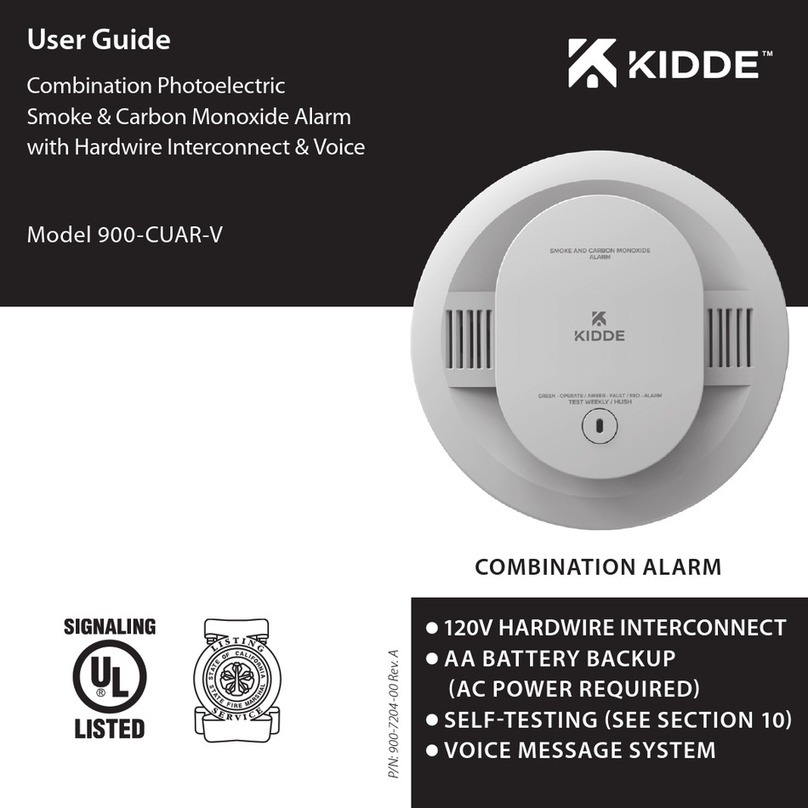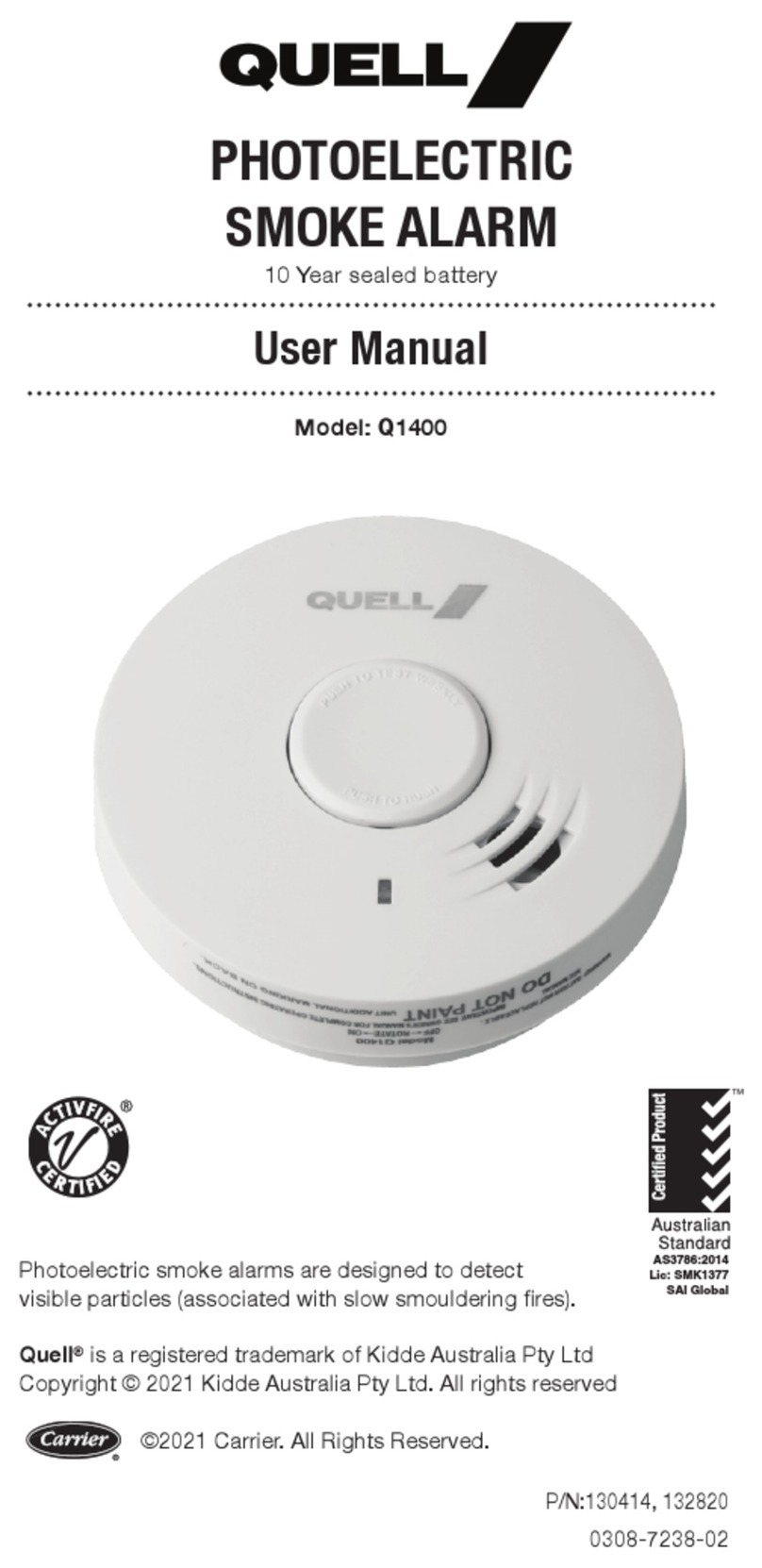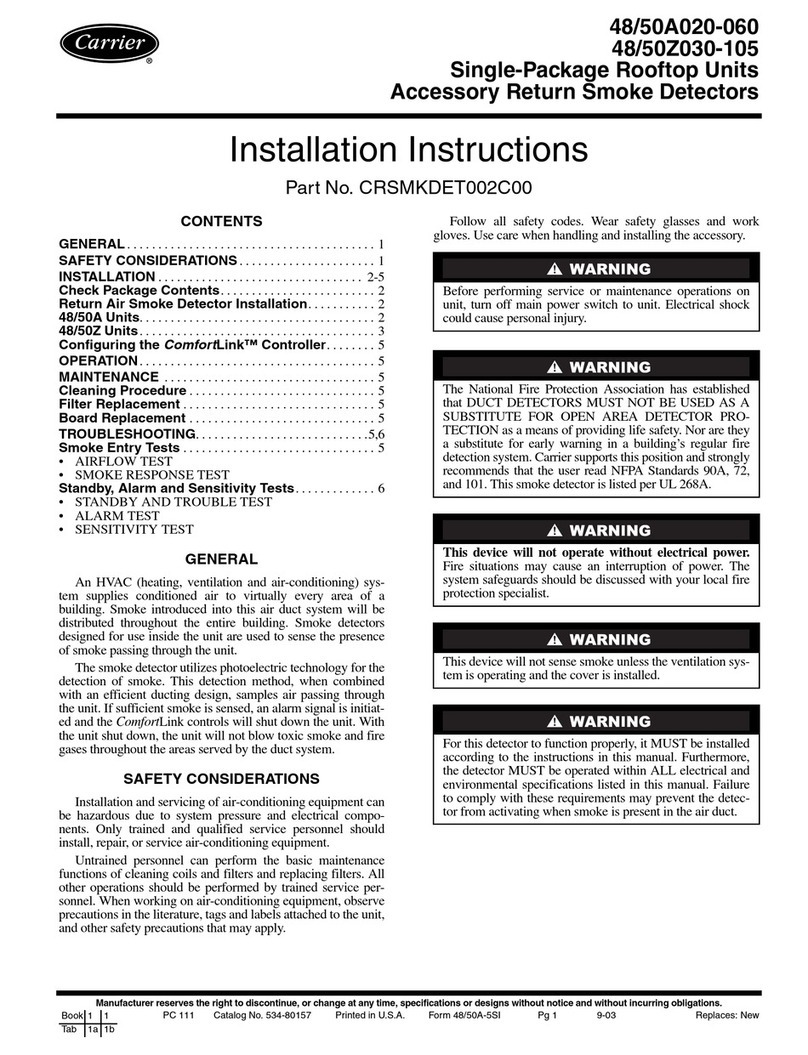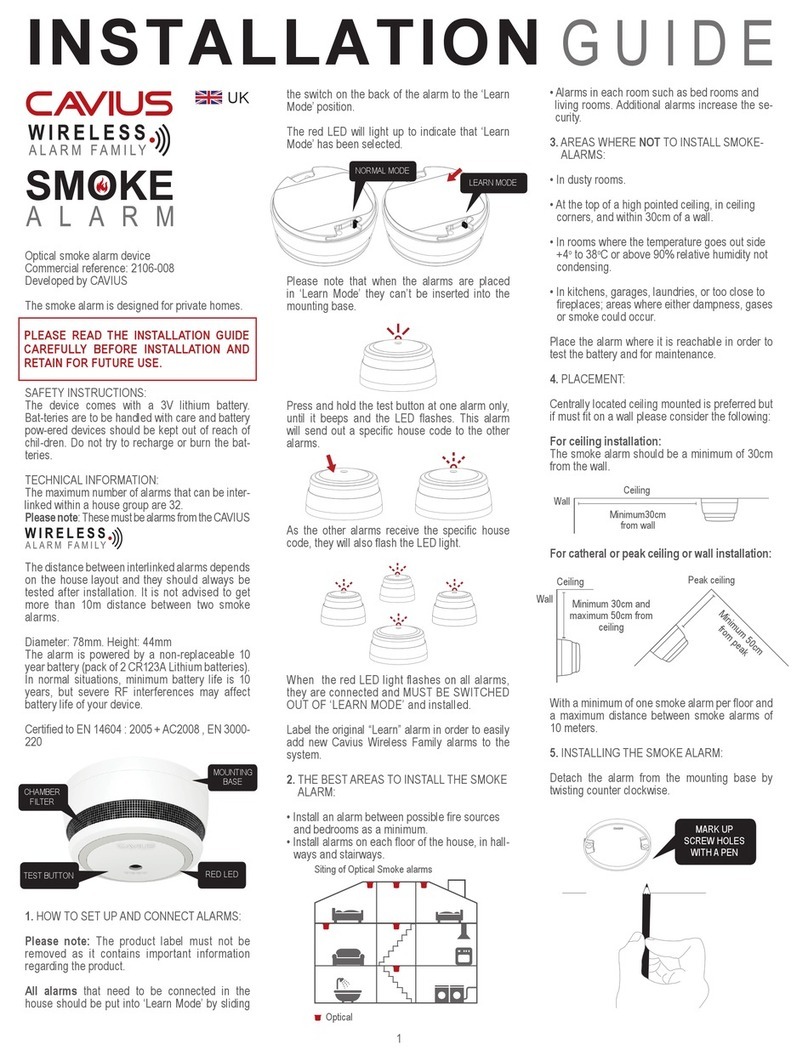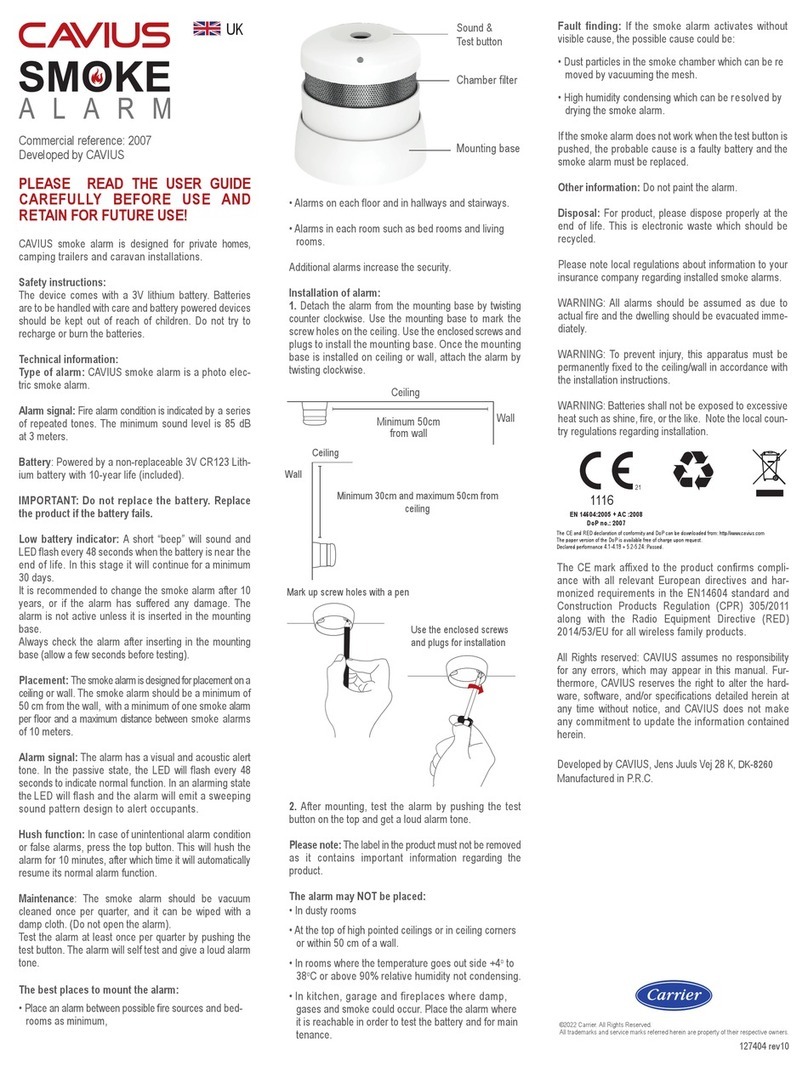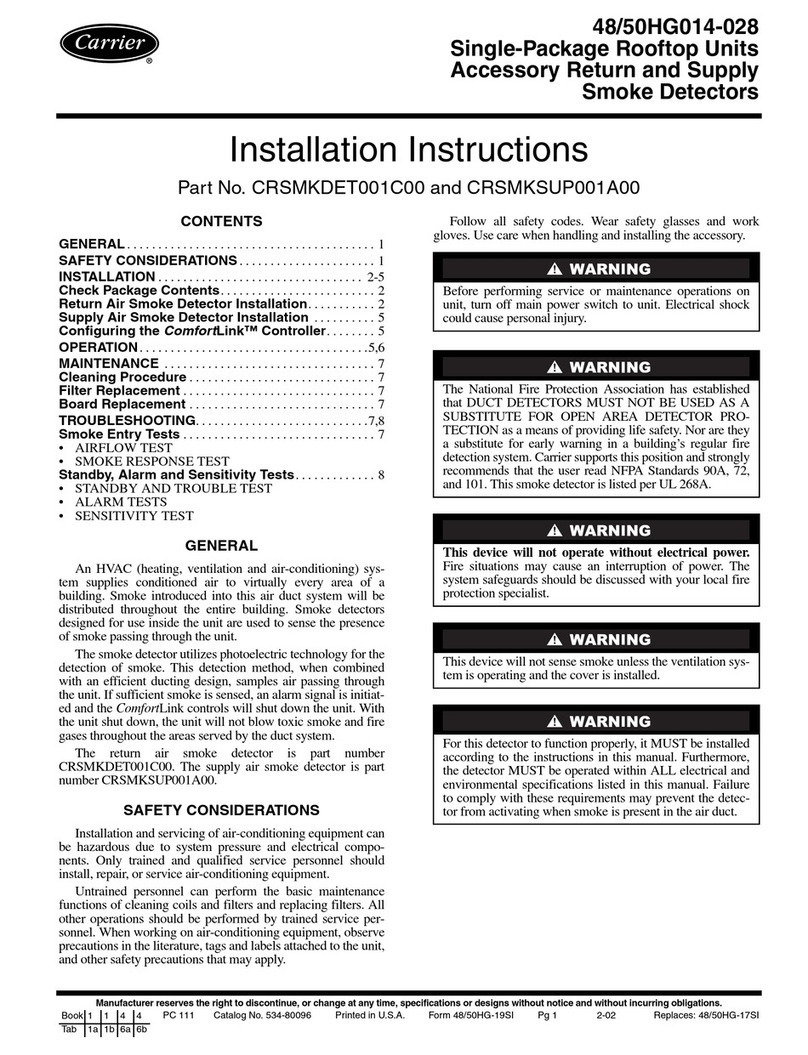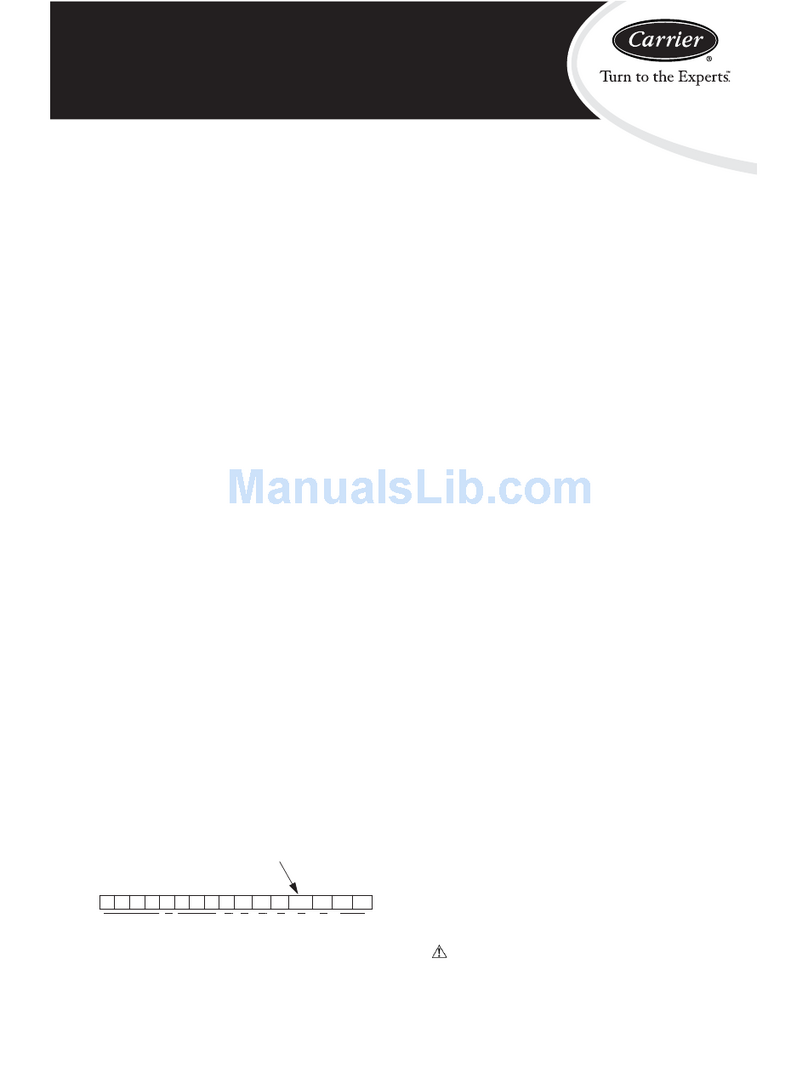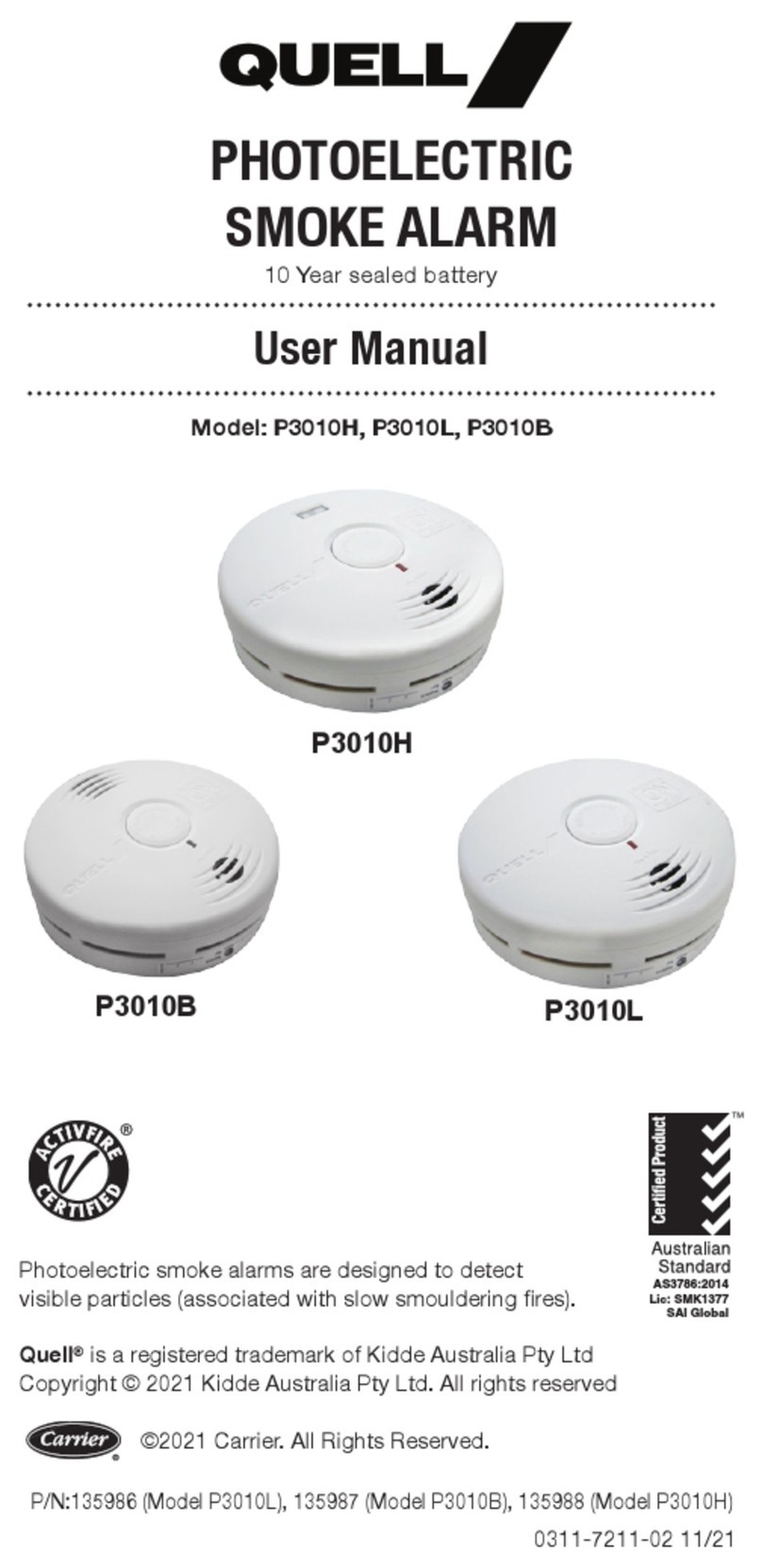
8
5. Installation
ATTACHING MOUNTING PLATE
OPTION 1:
Easy Mount – Drywall Only
1. Choose a mounting location (wall or ceiling)
and drill a 3/16”(5mm) diameter hole at least
1/2”(12mm) deep.
2. Insert the provided screw through the
mounting plate aligning the ribs on the screw
with the slots on the mounting plate.
3. Tighten the screw/mounting plate to wall or
ceiling until mounting plate is snug against
surface. DO NOT over-tighten.
OPTION 2:
Mounting on Other Surfaces
1. Choose a mounting location (wall or ceiling)
and using the mounting plate provided as a
template, mark three-hole locations.
2. Install the three provided screws through the mounting plate and tighten.
DO NOT over-tighten screws. (If mounting in plasterboard or similar sur-
face, drill 3/16”(5mm) holes and use the plastic anchors provided.)
Anchors are not required for mounting on hard surfaces such as wood.
ATTACHING AND ACTIVATING THE ALARM
This model is equipped with a feature that
automatically activates the alarm when the
alarm is attached to the mounting plate for
the rst time. Once activated, the battery will
supply power to the alarm for the life of the
alarm (10 years) under normal conditions.
Align the alarm with the mounting plate and
rotate clockwise (right) approximately 20°,
until the unit stops and clicks into place. DO
NOT over-tighten.
If unit needs to be re-aligned, rotate the alarm
counter clockwise, remove and rotate to
desired alignment.
NOTE: The alarm will mount to the plate in one position.
When mounting, the side rib (see picture below) on
the plate should be aligned to t with the bigger
slot (see picture below) on the back of the alarm.
You will know power has been supplied when
alarm briey chirps. Unit will remain on until unit
is disabled by the user at alarm’s end of life. Do
not over tighten the alarm as damage to alarm or
mounting surface may occur.
The alarm is now activated! After installation/
activation, test your alarm as described in
Operation and Testing section.
WARNING: Failure to properly install and activate this alarm will prevent
proper operation of this alarm and will prevent its response to re and CO
hazards.
!
Ribs (2
places)
Slots
Mounting
Option 2
Side rib

